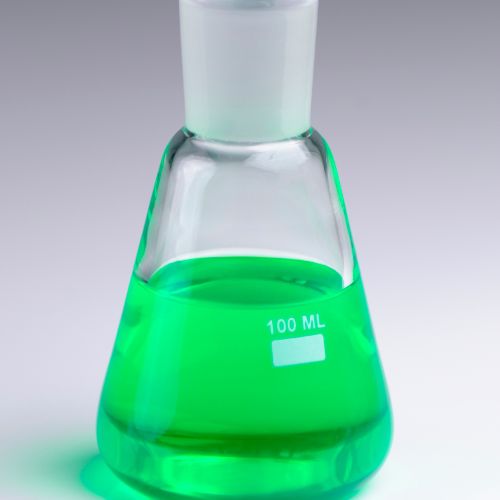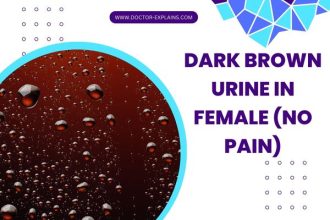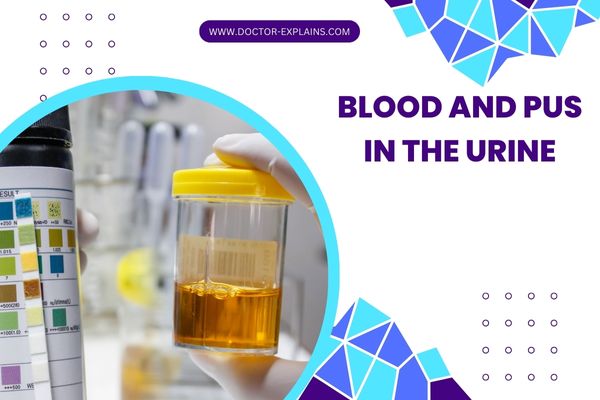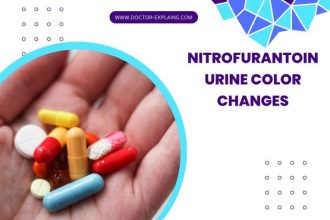6 Causes of Green Urine and Abdominal Pain & When to Worry
Our content is not intended nor recommended as a substitute for medical advice by your doctor. Use for informational purposes only.
Common causes of green urine and abdominal pain include Pseudomonal aeruginosa UTIs, Medications such as metoclopramide and antihistamines, and exposure to blue or green dyes or artificial colorings in food, drinks, or medical products.
Defining the cause of green urine and abdominal pain depends on factors such as other associated symptoms, recent intake of drugs, recent history of surgery or body scans, etc.
Causes of abdominal pain and green urine include:
- Pseudomonas aeruginosa UTI (urinary tract infections).
- Medications.
- Artificial green or blue dyes.
- Chronic obstructive jaundice.
- Recent body scans or surgery (using methylene blue or propofol).
- Other less common causes such as Typhus, Hartnup syndrome, etc.
Causes of Green urine and abdominal pain
1. Pseudomonas UTI (urinary tract infection).
The most common cause (about 90%) of urinary tract infections is E. coli bacteria (reference).
Pseudomonas aeruginosa is a gram-negative bacilli bacteria that may cause urinary tract infections in rare cases.
Pseudomonas-related UTIs may present with green urine and abdominal pain (in the lower abdomen). The green color of urine is due to the production of a pigment called (pyocyanin) by the bacterium (reference).
Symptoms of UTI:
- Dysuria (pain during urination).
- Green urine in Pseudomonas aeruginosa infection.
- Lower abdominal pain.
- Sometimes, lower back pain.
- Urinary frequency (frequent urge to pee but only small amounts of urine comes out).
- Smelly urine.
- Cloudy, smokey, or turbid urine.
- Frequent waking up to pee at night (nocturia).
- Sudden urge to pee (urgency).
- Blood in the urine (hematuria).
- Complicated pseudomonal infections may cause green urine and kidney pain (loin pain).
2. Medications.
Medications are one of the most common causes of occasional green color. Many drugs contain green or blue chemicals that appear in the urine leading to a green or lime urine color.
Medications that may help with abdominal pain (such as metoclopramide) may cause green urine. Common examples include Metoclopramide (for stomach pain and vomiting). Indomethacin, Cimetidine, and others.
In such cases, the urine is not directly linked to abdominal pain but results from medications that can be used for stomach pain.
You should expect urine to return to its normal amber-yellow color within a few hours or 1-2 days.
Prolonged green urine without taking any medications or the presence of other urinary symptoms often excludes the
- Indomethacin (Indocin® and Tivorbex®) is a nonsteroidal anti-inflammatory drug used for pain and fever.
- Metoclopramide is a medicine that treats nausea, vomiting, and slow stomach emptying (gastroparesis).
- Amitriptyline: is a medicine that treats mood disorders such as depression. It may also be used
- Propofol: a drug that is commonly for anesthesia (during surgeries).
- Promethazine (Phenergan®) is an antihistaminic drug (used for allergic conditions such as skin rashes, cough, etc.). It also has anti-nausea effects.
- Cimetidine (Tagamet®) is another anti-histamine used for acid reflux (GERD), peptic ulcer disease, and gastritis.
- Metronidazole (Flagyl®): a very common antibiotic used in gastrointestinal infections and others. Green urine is rare with metronidazole but can occur (especially in children). Green urine with metronidazole is a being and self-limiting.
3. Artificial dyes.
Artificial green or blue colorings are present in various drinks, foods, and other products.
Consuming any of these products may lead to green urine (reference). However, abdominal pain is not supposed to be a symptom of consuming such dyes and colorings.
Common examples include:
- Eating too many mint-flavored Clorets
- Green beer.
- Excessive use of mouthwash or deodorants.
- Traditional medicine products and herbal supplements.
- Herbicide poisoning.
4. Chronic obstructive jaundice.
When the bile ducts become obstructed, bilirubin levels increase in the blood and pass through the kidney leading to brown or tea-colored urine.
However, in chronic cases, bilirubin may break down into another substance called (biliverdin) which is greenish in color.
So, a patient with jaundice (yellow eye whites and skin), abdominal pain, and green urine is most likely to have obstructive jaundice.
Chronic obstructive jaundice is caused by:
- Gallstones obstruct the common bile duct.
- Pancreatic head cancer.
- Common bile duct strictures.
- And others.
Symptoms of chronic obstructive jaundice:
- Abdominal pain (right upper abdominal pain that comes and goes in attacks).
- Green urine.
- Urine color also can be green
- Yellowish eye whites.
- Yellowish skin, mouth, and tongue.
- Symptoms of the causes such as nausea and vomiting with gallstones, weight loss and diarrhea with pancreatic cancer, etc.
- Pale or clay-colored stools.
5. Recent surgery or body scan.
A. Methylene blue:
Methylene blue dye is a water-soluble substance easily excreted in the urine.
This substance is commonly used in:
- During radiological scans (computed tomography).
- During surgery: surgeons use the dye to test the integrity of an anastomosis (connecting to adjacent channels as intestinal anastomosis).
- Used as an injection drug to treat a disease called Methemoglobinemia.
Methylene blue is blue, but it causes green urine as the blue pigment combines with the yellow urine pigments resulting in green color.
B. Propofol:
It is typical to experience abdominal pain after surgery or anesthesia. Always ask your doctor about propofol (an anesthetic medication that may cause green urine after surgery). The color of urine may range from blue, bluish-green, lime (yellowish-green), or light (bright) green color.
6. Other possible causes.
These are rare causes of abdominal pain and green urine:
- Hartnup disease.
- Indicanemia.
- Typhus.
- Vesico-enteric fistula.
When to see a doctor for green urine and abdominal pain.
- Prolonged greenish discoloration of urine for days without an obvious cause.
- Severe abdominal pain or tenderness.
- Severe burning urination or frequent urge to pee.
- Cloudy, smokey, or turbid urine.
- Jaundice or clay (pale stools).
- Fever.
- Nausea or vomiting.
- Severe abdominal pain.
- Accidental intake of abnormal chemicals (poisoning) such as herbicides.
Treatment of green urine and abdominal pain.
The treatment of green urine and abdominal pain depends on the cause. Here are the treatments for the common causes.
- UTI due to pseudomonal infection is treated mainly by antibiotics such as penicillins, cephalosporins, or aminoglycosides (reference.
- Abdominal pain due to UTI is often treated with analgesics such as ibuprofen or paracetamol.
- Medications are often a benign cause of abdominal pain and green urine; stopping the offending drug will always resolve the issue.
- Green artificial dyes are also not a cause of concern (unless you’ve ingested a poisonous substance such as herbicide). Green urine will go away on its own when you withdraw the causative agent.
- Chronic obstructive jaundice needs advanced management, such as with a specialized bile duct endoscope (ERCP), surgery, or medical treatments. The type of treatment depends on the cause of biliary obstruction.
- Evidence-based
- Written by a doctor.
MD, Internal Medicine and Nephrology specialist.

Dr. Esraa A. MagidAuthor
MORE INSIGHTS





